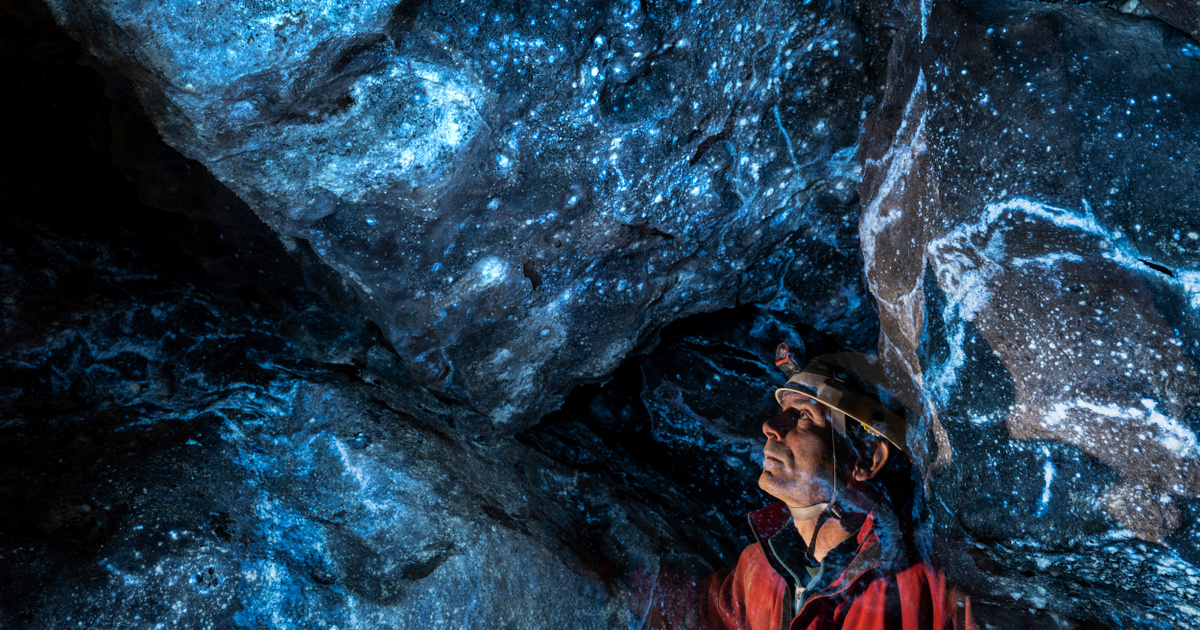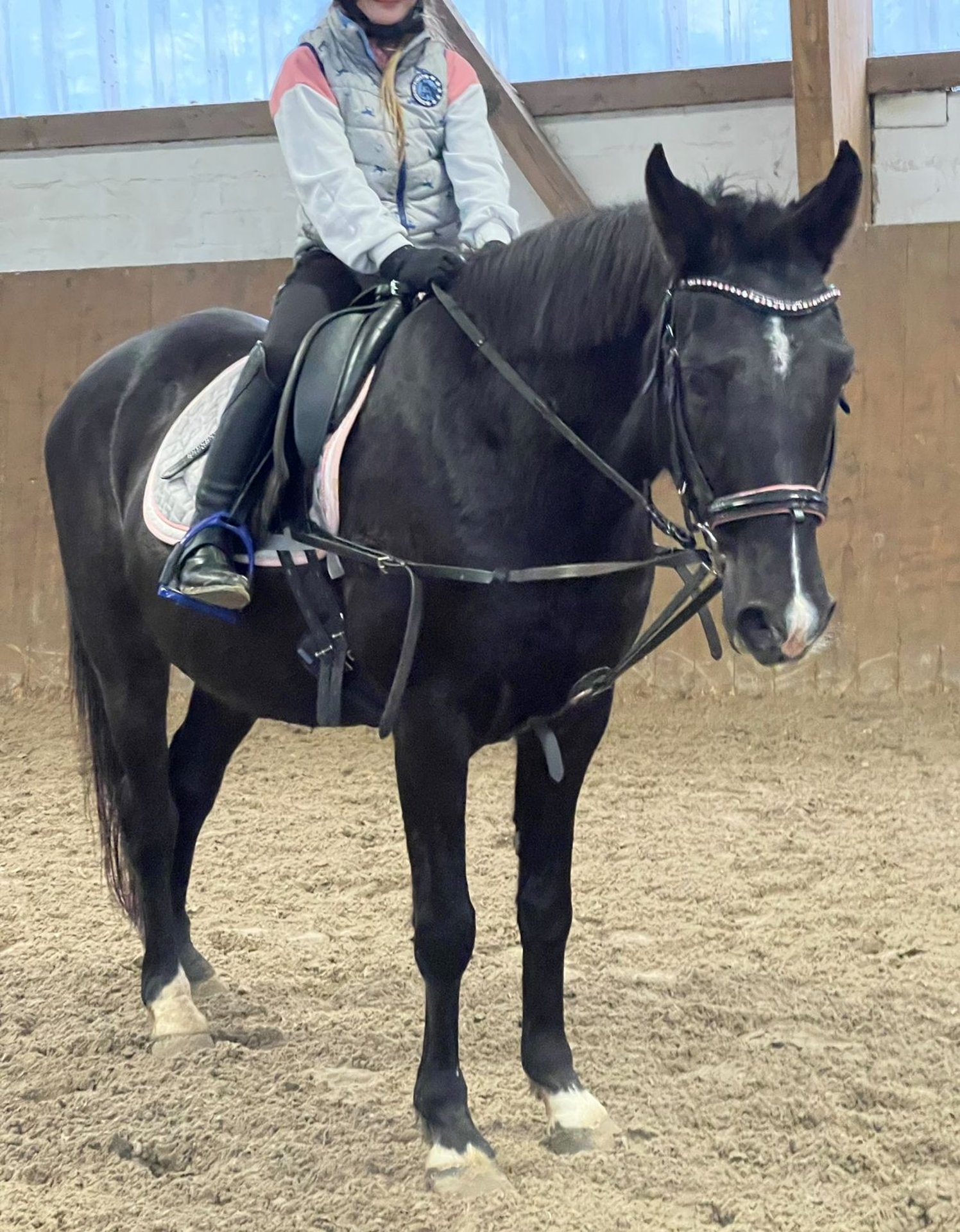Ágnes Berentés has long been interested in the idea of how minerals would look in their natural environment, luminescent. His photos mix visible light and UV light, thus presenting a completely new, never-before-seen world of caves and mines.
The human eye can perceive only a narrow energy range of the total radiation coming from the sun. This is called visible light. Wavelength ranges outside of this are no longer directly involved in our imaging.
The colors of the world around us are also influenced by the wavelength of the light that falls on them, reflects on them, and is absorbed by them. If radiation with a higher energy than the range of visible light hits the surface, we can experience the phenomenon of luminescence in many cases, both in living and non-living nature, as well as in our artificial environment. So “things” irradiated with UV light glow during the radiation (fluorescence) or after (phosphorescence). This is also the case with many minerals. Due to their structure or due to built-in impurities, they react with a light phenomenon of different colors and intensities already in the range of visible light.
Caves are formed in rocks, and rocks are made up of minerals. Thus, just like in display cases, the phenomenon of luminescence can also be observed in a natural environment.
In 2018, Ágnes was the first in Hungary to photograph large-scale cave spaces in long-wavelength UV light.
Challenging, literally groping in the dark and finding a way characterizes this new direction that offers an exciting visual world. There were no role models in front of me, so I was constantly experimenting with how what I saw would work as an image. I use mixed lights to create the images. The model is illuminated with visible light, and its surroundings glow with UV light. In addition to the fact that our well-known caves come to life around us in a never-before-seen visual world, the interesting thing about UV photos is that they allow us to distinguish mineral phases that we would not even notice due to their apparent homogeneity in the range of visible light
he says about his works.
Ágnes Berentés geologist, geographer and photographer. Ten years ago, during his university studies, he got to know the world of caves. The sight of untouched places that people had never visited or seen before made him think that he should show them to those who would not be able to see them otherwise.
He picked up a camera for the first time in 2014, and unlike most photographers, he learned to use it in caves. It is true that this type of photography is very similar to studio photography, as the photographers adjust the lights to their liking in a dark space, but the conditions are extreme. The photos are sometimes taken belly-up in water-filled narrows, other times in giant spaces that absorb light, in 100-meter-wide shafts, hanging on a thin rope, or balancing over a crevice, sometimes hundreds or thousands of meters underground. The purpose of Ágnes’ photography is multifaceted: sometimes she wants to show the hidden beauties of ordinary places, and sometimes she creates documentation or photo reports.
The photos presented here are by Ágnes Berentés Visible Invisible parts of his exhibition, where the large-scale, detailed and backlit pictures displayed in a completely dark space recreate the atmosphere of this light phenomenon for the viewers. In addition, the exhibition is interactive, visitors can get their hands on a UV lamp and make the minerals luminesce. Ágnes’ works can be viewed at the Herman Ottó Museum in Miskolc until July 2, 2024.
(The pairs of images shown in the article were taken from the same location in the visible light range and then in long-wavelength UV light.)
József-hegyi-cave, Budapest (In the picture: Pál Borka) Photo: Ágnes Berentés
Mineral exploration facilities in Mátra Photo: Ágnes Berentés
Golokratna Jama, Slovenia (In the picture: Bálint Regős) Photo: Ágnes Berentés
Mineral exploration facilities in Mátra Photo: Ágnes Berentés
Mineral exploration facilities in Mátra Photo: Ágnes Berentés
Földvár Aladár Cave, Bódvaszilas (In the picture: Réka Veres) Photo: Ágnes Berentés
Mineral exploration facilities in Mátra Photo: Ágnes Berentés
József-hegyi-cave, Budapest (In the photo: Matuszka Fanni) Photo: Ágnes Berentés
Mineral exploration facilities in Mátra Photo: Ágnes Berentés
Tüskés cave, Esztergom (In the picture: Richard Kovács) Photo: Ágnes Berentés
Mineral exploration facilities in Mátra (On the picture: József Haász) Photo: Ágnes Berentés
Follow Index on Facebook too!
I’m following you!
2024-01-20 05:23:00
#Visible #invisible #world #violet #depths #earth


